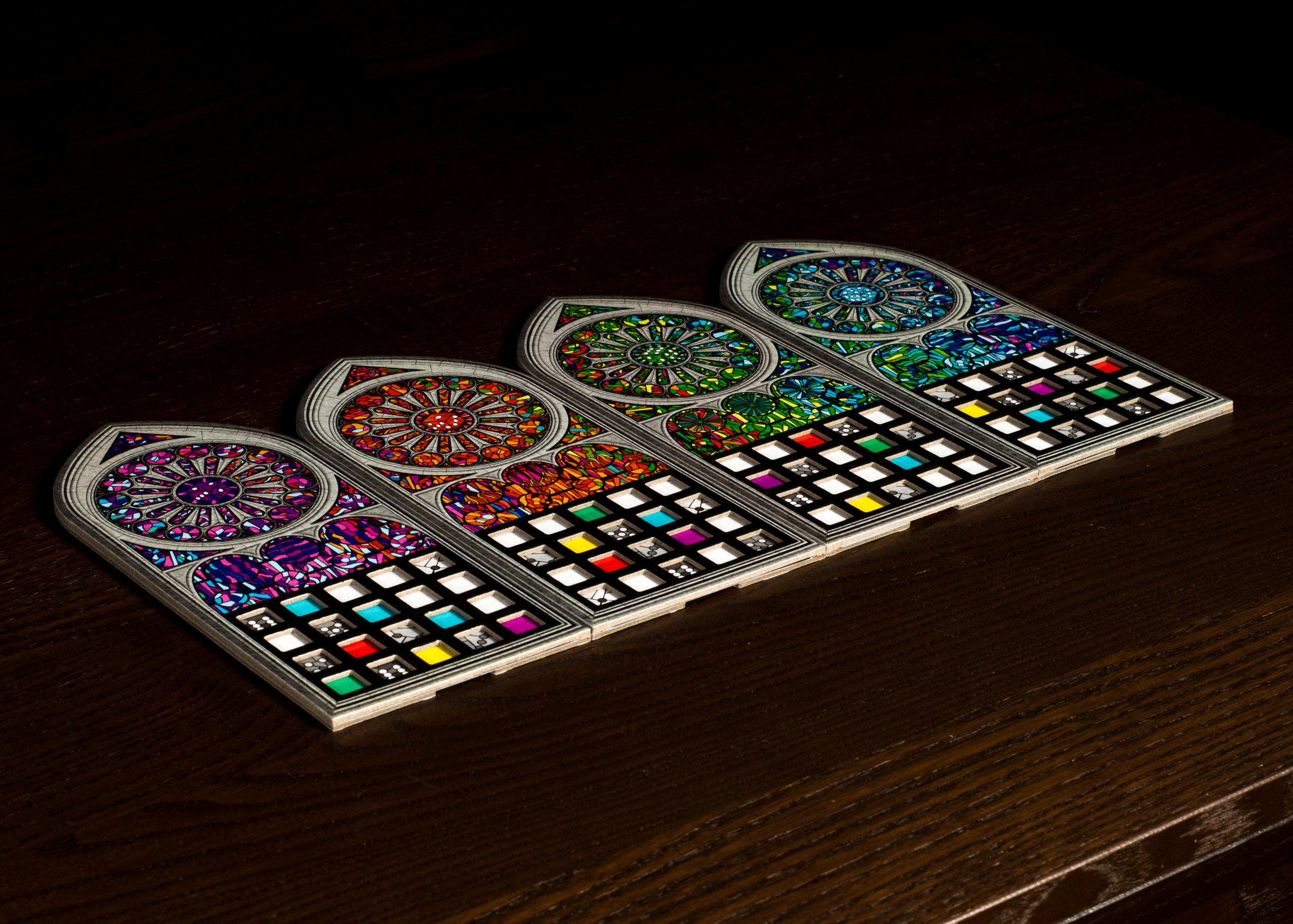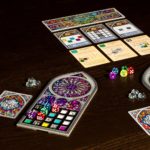As part of our April Spotlight on Sagrada, we strive to inform readers of little extra tidbits surrounding the game. Games are made by people, and one of those tidbits we enjoy is learning a little bit more about the people behind them. Some designers shy away from the public stage, while others enjoy being front and center.
In the case of Sagrada, the quest to learn more about how this game came to be turned out to be a bit of a globe-hopping trip. For it was a game that was made in China, published by an American, designed by a pair of Canadians, and was all inspired by a vacation to Spain. Knowing that we couldn’t really afford the travel bills for such a brief story (our finance team would have gone ballistic), we knew we had to focus on one specific avenue to investigate. And unsurprisingly we went with learning more about how the game was designed. Which meant our efforts took us to the mythical lands of Ontario to find some answers. After several false sightings that turned out to be moose instead, we were able to locate designers Daryl Andrews and Adrian Adamescu to find out how the whole ‘dice drafting and window crafting’ concept came to fruition.
That is the focus of the lightweight Sagrada, after all. In it, players take turns selecting dice from a small pool that are drawn and rolled each round. Your goal is to place the dice on your gridded window board in such a way that maximizes your points at the end of the game. In a typical case of being easier said than done, however, your board comes with a number of restrictions, such as spaces only allowing a certain color die or a value. What’s more, you can’t place any dice adjacent to one another if they share a number or color. Thus, while the simple act of taking a couple dice each round starts off innocently enough, by the end the choices are anything but light.
Well, light as in…as opposed to the other meaning of…oh never mind.
To find out how this tactile and aesthetically appealing family game was crafted, we sat down with designer Daryl Andrews himself. Hopefully he’ll share a couple trade secrets on this age-old art. Enjoy!
Editor’s Note: Due to some issues with time and / or a mishap with the little known Take Your Maple Saplings To Work Day (we won’t say which), we were unable to include Adrian in our questioning.
Round One Questions
CR: What was your Gateway Game?
I would say my early gateway game was Scotland Yard. I loved a variety of games growing up, but Scotland Yard was the gateway for me in learning about games that did things in a “Euro” way. Fast-forward 10 years and I discovered Puerto Rico & Catan. I fell in love with Puerto Rico; that was a game changer for me.
CR: What was the last game you really enjoyed playing (Sagrada)?
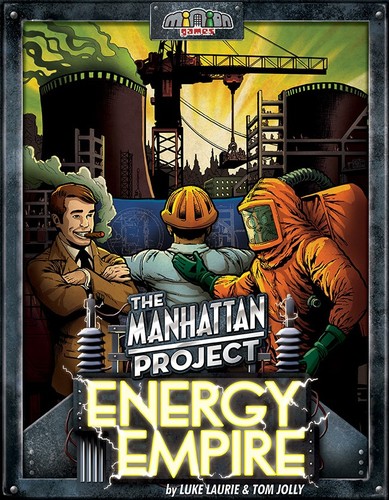
I would say my favorite games of 2016 include: Kingdomino, Ulm, Codename Pictures, Ice Cool, The Colonists, & Manhattan Project: Energy Empire. As you can see, I have very diverse taste in games.
CR: How big is your game collection?
My game collection is too big at the moment. I really need to downsize. However, I cant resist a good game or a good deal. I am also notorious for pillaging my game collection for prototype bits. I recently took over 200 of my games to a local board game convention. I felt like it was about 30% of my game collection.
CR: What is your favorite type of game to play?
Quick card and dice games are always my favorite. I respect elegance of game design. I also really enjoy trick-taking games and being able to socialize while gaming. When I play games I want to be social, feel clever, and have fun. I enjoy Euro rules to design, but I need interaction (even if subtle). The look / feel to a game is very important to me too.
And then sometimes I love a good meaty 90-120 minute brain burn.
CR: How do you feel about Monopoly?
A friend of mine formerly ran the blog called, “Death of Monopoly”. It was a cheeky way to respond to his family and friends who would always ask if he liked Monopoly when they would learn he likes games. Personally, I think Monopoly has many great decisions – if played by the full original rules. However, I try to play other games whenever possible.
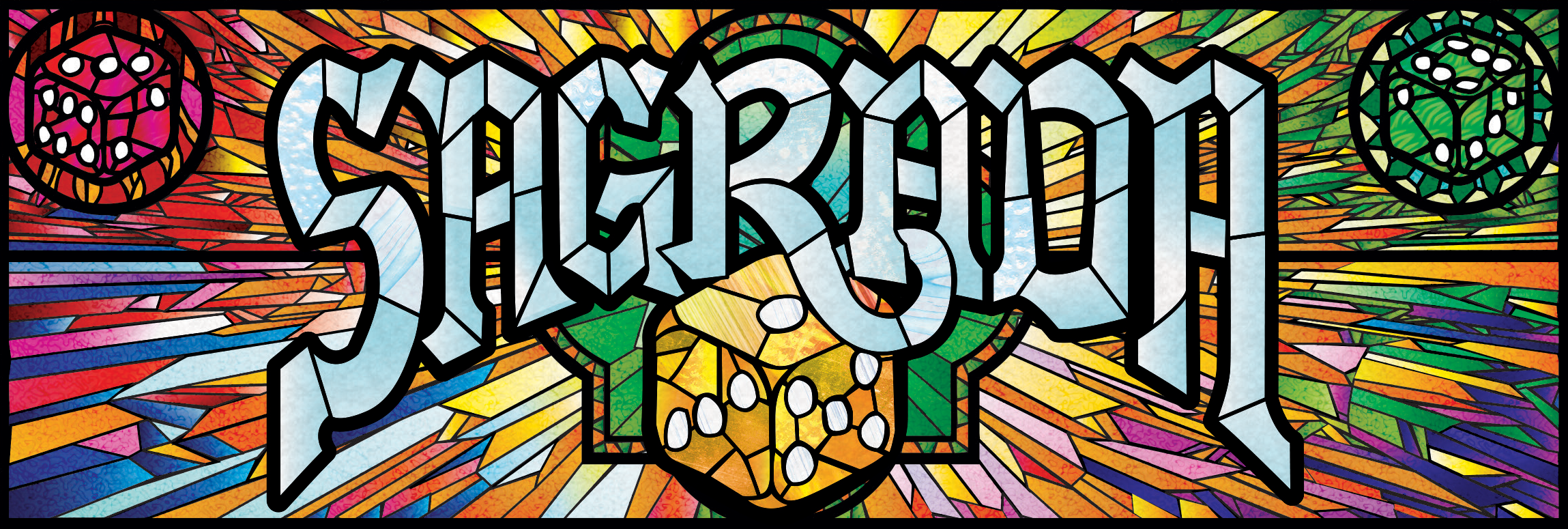
On Sagrada
CR: As you’ve stated before elsewhere, your idea for the theme of the game came about when visiting the Sagrada Familia in Barcelona. What was it about this building that sparked the initial design thoughts?
I was on a very influential trip in my life. I had just spent the last six weeks traveling Switzerland, Italy, and Spain with my wife. We were leaving to go back home in a few days and this was the last thing on my “must visit list” for the trip. It was a moment I really soaked up the atmosphere and beauty. I spent a lot of time reflecting and staring at the beautiful windows. And the theme for the game just clicked in my head. The mechanics Adrian & I had already been working on, but the game was waiting for the needed Aha! moment. That was it.
CR: How did you and [co-designer] Adrian Adamescu end up working together on designing this game? We’re going to assume it’s not just because you’re both Canadian…
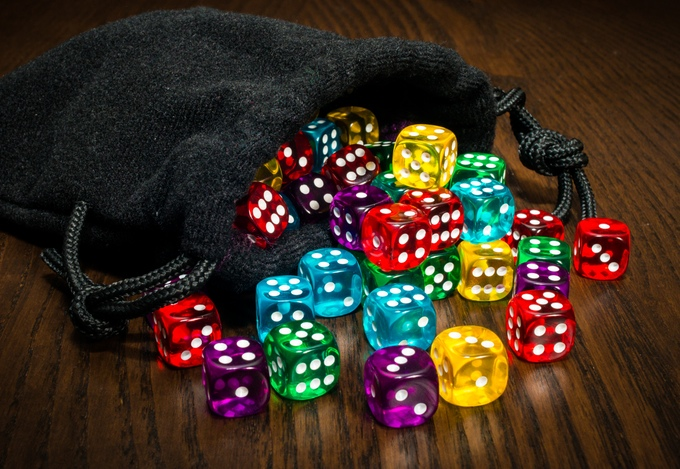 I love designing games with Adrian. We share many of the same interests and values. We care about each other and enjoy working together. Its hard to describe, but some people you just click with. Initially we connected because of the Game Artisans of Canada.
I love designing games with Adrian. We share many of the same interests and values. We care about each other and enjoy working together. Its hard to describe, but some people you just click with. Initially we connected because of the Game Artisans of Canada.
However, quickly we learned we were very productive working together. Often Adrian works on making the prototypes and focusing on mechanics and rules. Early on I focus more on experience and theme. Then I focus more time on playtesting and development. Adrian comes back into the process for rules polishing. And then I pitch the games we make.
CR: Sagrada really seems to hit that sweet spot as an accessible half hour game. Was there a concentrated effort to focus on its length / audience, or was it more just how the game developed?
A significant amount of our time and decisions were focused on trying to design with tight constraints. We identified the need for a Gateway Game that used dice in a new way. We also thought the best chance for a wide audience of people to enjoy the game is keeping the overall playtime short and satisfying.
CR: Even for a lightweight dice crafting game, Sagrada performed incredibly well during its Kickstarter. Was there anything particularly surprising to you as you watched the campaign unfold (or afterwards)?
I was shocked. Honestly, I feared we might not fund. No joke. I pitched this game to numerous game companies and heard many “no’s”. It messed with my head and confidence in the game. However, our playtest results showed lots of love for the game. Ben Harkins from Floodgate did an amazing job in product development. He made the entire product shine with the help of artist Peter Wocken. Ben took the time with the game to pre-market and gain a fan base. He could have rushed it, but instead Ben was smart and let that fan base grow. We had some amazing supporters who really helped spread the word too. It was so fun to watch people promoting and supporting the game.
CR: Part of the early positive reception involves the pairing of the dice placement mechanic with the flavor of setting them onto spaces on an indented board. Was the idea of an indented board there from the start?
Every time I pitched the game I would say, “Ideally the window component could look something like ___” and I would describe the product. I had a clear vision. However, I always feared the publisher wouldn’t catch our vision or it would just be too expensive. In the end, Floodgate Games nailed it to perfection.
CR: In addition to your designer credits, you also co-host Meeple Syrup, a recurring show that focuses on the design side of gaming. How has that role affected how you approach game design?
The show has changed my life. We are over 100 episodes in, and I’m still learning every episode. I have learned so much from a variety of the top designers in the world. Majority are so kind and gracious with wisdom and advice. I just try to soak it all up.
CR: Part of the arduous process of making stained glass artwork is ensuring that you craft it just the way you want. To that end, was there anything during development that you really wanted to include that ended up getting cut for one reason or another? (Such as being saved for an expansion…)
Nothing major was cut from the game. However, we do have some very cool additions we hope will come out some day. Adrian & I have designed a few different module add-ons, more tools, and other types of cards that we are currently testing. Some of them are hard to play without; I like them so much.
We also designed a card game version of Sagrada. It plays different but has some great winks to the main game. Additionally, Adrian & I are working on another standalone game set in the Sagrada universe. In it, players are building the towers of the Sagrada Familia over the generations. However, this game is still in the design / development stages. We hope to pitch it to Floodgate later this year.
CR: Finally, we’re curious to know: do you have any guilt over the fact that your game was completed long before the actual Sagrada Familia will be?
Not at all. Because each time it goes back in the box, someone needs to build the Sagrada windows again. Seems only fitting!
Thankfully, the act of creating stained glass windows in the game of Sagrada is by far easier, cheaper, and faster than attempting to create them for a project as big as the place that inspired the game.
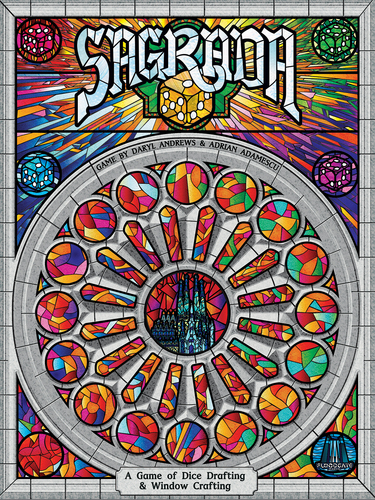
We’re under no illusion that the skill necessary to create even the most basic stained glass windows is one that involves a lot of time, patience, and practice. Unfortunately, most of us just don’t happen to have a glass smelting forge nearby to tinker with when the inspiration strikes. So it definitely makes the whole learning process a bit more tricky.
Plus, it also made what we wanted to do to celebrate Sagrada more difficult. Our legal expert Claudius figured it’d probably be a terrible idea to send out a Do It Yourself Smelter. And we trust him. His lack of fingerprints on one hand speaks from experience.
Dice crafting on the other hand is much more manageable. And so we’re going to see about giving away a dice crafting apprenticeship learning tool (aka a copy of the game) right…now.
Do you think you have what it takes to be an expert dice crafter? Let’s find out!
Photo Credits: Sagrada cover and photos by Floodgate Games; Sagrada Familia by Dreamstime.

